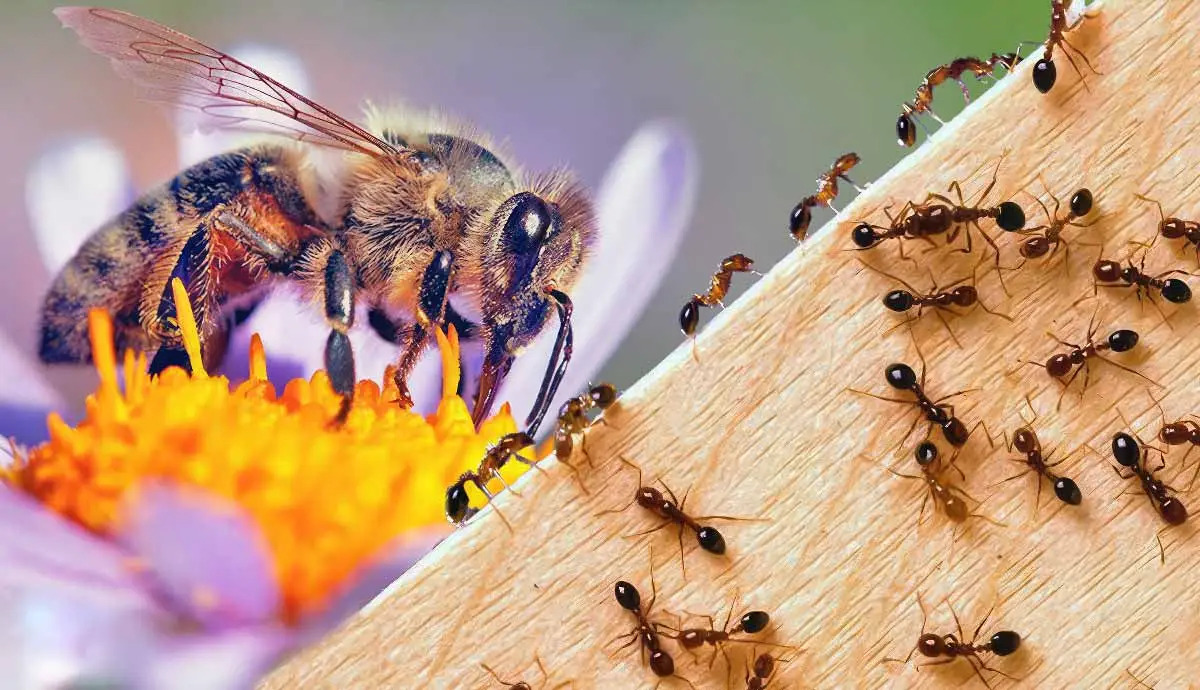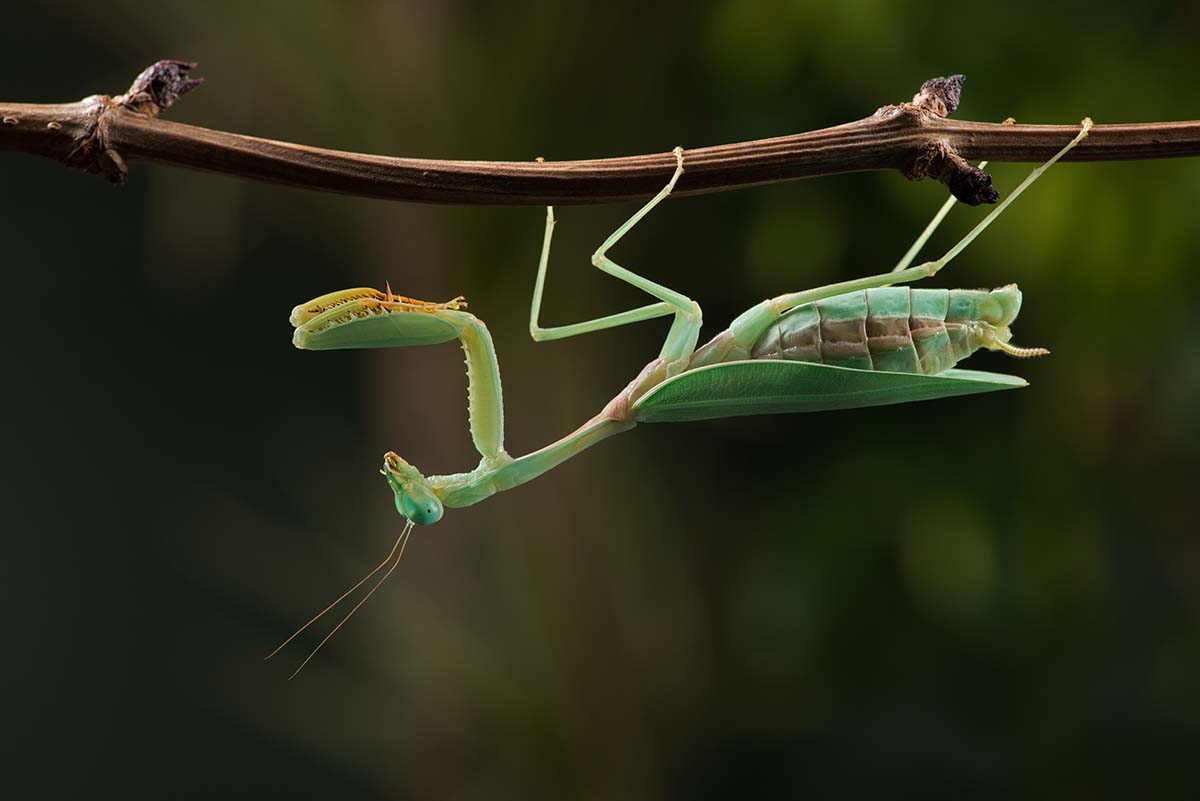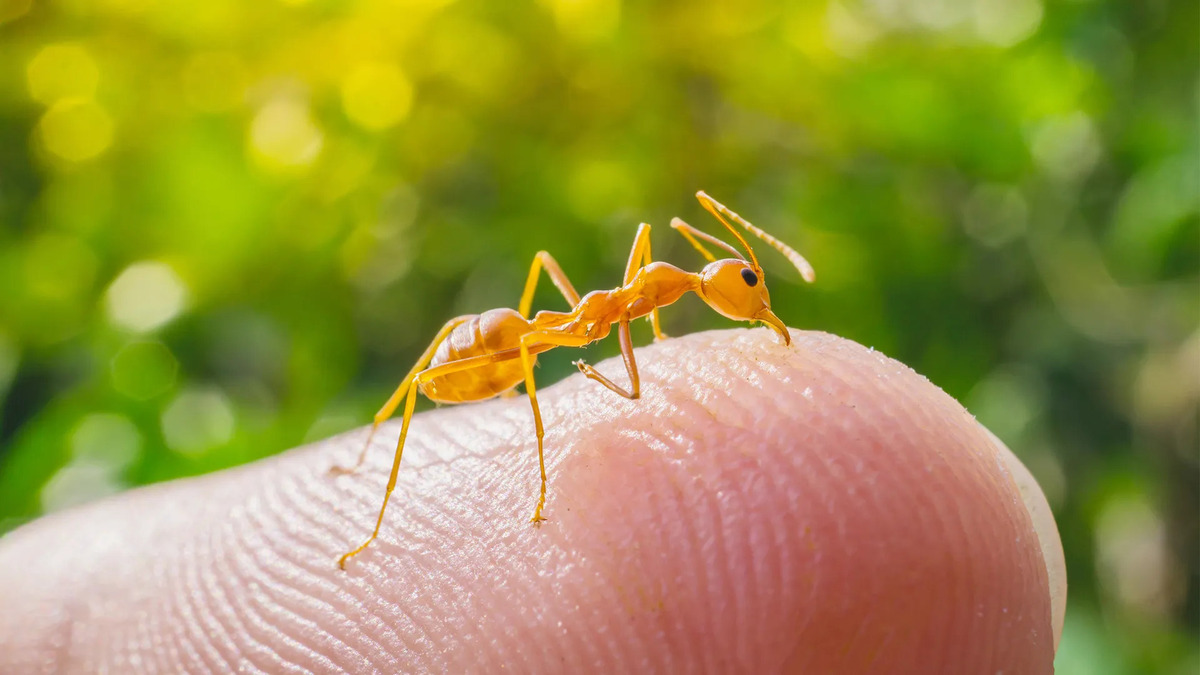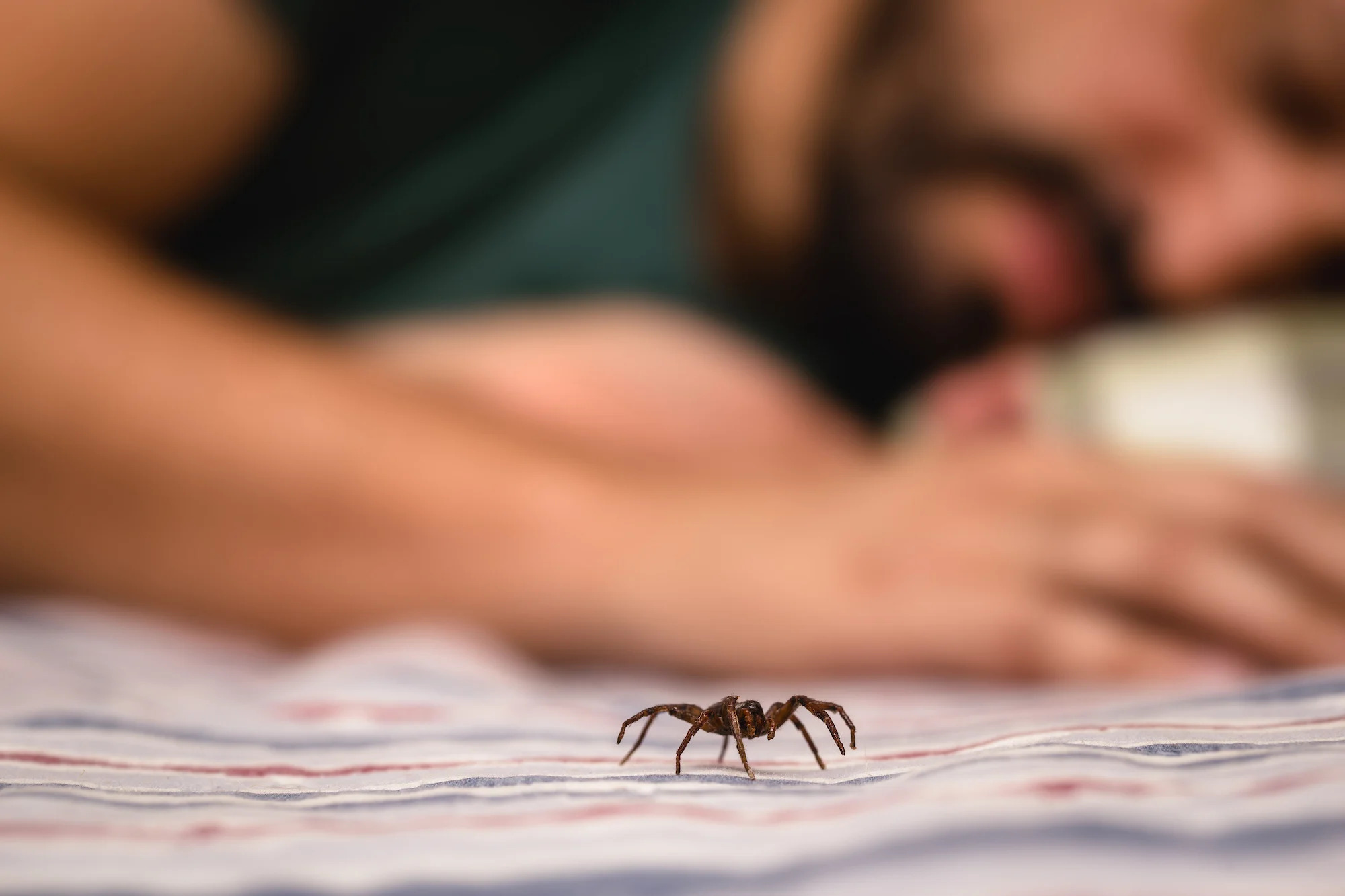Home>Gardening News and Trends>Latest News>How Many Insects On Earth


Latest News
How Many Insects On Earth
Published: November 30, 2023
Get the Latest News on How Many Insects On Earth! Discover fascinating insights and surprising facts about the incredible variety of insects inhabiting our planet.
(Many of the links in this article redirect to a specific reviewed product. Your purchase of these products through affiliate links helps to generate commission for Chicagolandgardening.com, at no extra cost. Learn more)
Table of Contents
Introduction
Insects are fascinating creatures that play a vital role in ecosystems all around the world. They comprise the largest group of animals on Earth, with over a million known species. From bees and butterflies to ants and beetles, insects are incredibly diverse in their forms, behaviors, and habitats. Their economic, ecological, and cultural importance cannot be understated, making them an integral part of our planet’s biodiversity.
Insects are not only essential for pollination, helping to fertilize flowering plants, but they also serve as a crucial food source for many other animals, including birds, reptiles, amphibians, and mammals. In addition, they aid in the decomposition of organic matter, cycling nutrients back into the environment. Some insects are even used by humans for agricultural purposes, such as pest control and honey production.
The sheer magnitude of insect diversity is awe-inspiring. They can be found in almost every habitat on Earth, from the depths of the ocean to the highest mountaintops. Each species has adapted to its specific environment, developing unique physical characteristics and behavioral traits.
Estimating the total number of insects on Earth is a challenging task. With millions of species yet to be discovered and the difficulty in quantifying their populations, researchers must employ various methods to estimate their abundance. These methods range from direct observation and trapping techniques to statistical modeling based on specific habitats or geographic areas.
Unfortunately, in recent years, there has been increasing concern about the decline of insect populations worldwide. Human activities, such as climate change, habitat destruction, pesticide use, and pollution, have contributed to this decline. The consequences of this decline can be far-reaching, impacting not only ecosystems but also food production, as many crops rely on insect pollination.
In this article, we will explore the fascinating world of insects and delve into the challenges of estimating their populations. We will also discuss the factors that affect their numbers and the implications of the ongoing decline in insect populations. Join us on this journey as we uncover the secrets of these incredible creatures that inhabit our planet.
Importance of Insects
Insects play a crucial role in maintaining the balance of ecosystems and are often referred to as “ecosystem engineers.” They contribute to a wide range of ecological processes, making them indispensable for the functioning of ecosystems and the survival of other organisms.
One of the most notable contributions of insects is their role as pollinators. They have coevolved with flowering plants, forming a mutually beneficial relationship. As insects feed on nectar or collect pollen, they inadvertently transfer pollen grains from one flower to another, facilitating fertilization and the production of fruits and seeds. This process is vital for the reproduction and diversity of plant species, including many crops that humans rely on for food.
In addition to their vital role in pollination, insects also play a critical role in nutrient cycling. They are efficient decomposers, breaking down dead plant and animal matter into simpler organic compounds. Through this process, they release nutrients back into the soil, allowing them to be absorbed by plants and reused within the ecosystem.
Furthermore, insects serve as a crucial food source for many other organisms. They form the base of numerous food chains, providing sustenance for birds, reptiles, amphibians, mammals, and other insects. Insect larvae, such as caterpillars, are particularly important food sources for developing bird species, ensuring their growth and survival.
Insects also contribute to pest control in agricultural systems. Natural predators such as ladybugs, lacewings, and parasitoid wasps help regulate populations of agricultural pests by preying on them or using them as host organisms. This natural biological control reduces the reliance on chemical pesticides, making agricultural systems more sustainable.
Moreover, insects have cultural significance and play a role in human societies. They are often depicted in art, literature, and folklore, representing various symbolic meanings. In some cultures, certain insects hold religious or spiritual significance, while others are associated with luck, transformation, or perseverance.
Overall, the importance of insects cannot be overstated. They are essential for pollination, nutrient cycling, pest control, and as a food source for other organisms. Their ecological impact extends beyond their individual species, influencing the overall health and functioning of ecosystems. Understanding and preserving the diverse range of insects is crucial for maintaining the delicate balance of our planet’s ecosystems.
The Diversity of Insects
The world of insects is a testament to the staggering diversity of life on Earth. With over a million known species, insects are the most diverse group of animals. They exhibit a remarkable range of shapes, sizes, colors, and behaviors, making them a fascinating subject of study for scientists and nature enthusiasts alike.
The diversity of insects is evident in their varied anatomical features. They can range from minuscule, barely visible creatures, to insects with a wingspan spanning several inches. Some insects have elongated bodies, while others have compact forms or distinct shapes like the praying mantis or stick insect. Insect wings can be transparent, iridescent, or adorned with intricate patterns, enabling them to fly with grace and precision.
Their colors are equally diverse, with insects displaying an array of vibrant hues. From the dazzling metallic colors of beetles to the delicate patterns on butterfly wings, insects have evolved stunning visual displays. These colors serve various purposes, such as attracting mates, warning predators of their toxicity, or camouflaging themselves to blend into their surroundings.
The behaviors exhibited by insects are equally diverse and captivating. Some species, like honeybees and ants, have complex social structures, with specialized roles for individuals within the colony. They display intricate communication systems, cooperation, and division of labor, making them examples of efficient societal organization in the animal kingdom.
Insects have also evolved incredible adaptations to survive in different habitats. They can be found in almost every corner of the globe, from the freezing Arctic regions to the sweltering deserts and tropical rainforests. Some insects have developed the ability to burrow underground, while others live on the surface of water or even in the air. The diversity of habitats that insects occupy is a testament to their resilience and adaptability.
It is important to note that the known diversity of insects only scratches the surface. It is estimated that there are still millions of insect species yet to be discovered. Insects can be found in the most unexpected places, and ongoing research continues to uncover new species in previously unexplored areas.
The sheer magnitude of insect diversity highlights the importance of preserving their habitats and ensuring their survival. Each species has a unique ecological role, contributing to the delicate balance of ecosystems. Understanding and appreciating the diverse world of insects not only broadens our knowledge of the natural world but also serves as a reminder of the remarkable variety of life that exists on our planet.
Methods used to Estimate Insect Populations
Estimating insect populations is no easy task due to their incredible diversity and abundance. Researchers employ various methods to estimate the number of insects in different areas and habitats. These methods range from direct observation to more complex statistical modeling.
One of the simplest and most direct methods of estimating insect populations is through visual observation. Researchers and citizen scientists can count the number of insects they see in a particular area within a specific time frame. This method is often used in butterfly and dragonfly surveys, where observers keep track of the number of individuals they encounter while walking along predefined routes.
Trapping techniques are also commonly used to estimate insect populations. These traps can take different forms, such as pitfall traps, light traps, or suction traps, depending on the target insect species and the research objectives. Pitfall traps consist of containers set into the ground to capture crawling insects, while light traps attract flying insects with artificial light sources. Suction traps, on the other hand, use suction to collect insects from the air.
Another approach to estimating insect populations is through mark-recapture studies. This method involves capturing a sample of individuals, marking them in a way that does not harm them, and then releasing them back into the wild. After a certain period of time, another sample is collected, and the number of marked individuals found in the second sample is recorded. This information is then used to estimate the overall population size using statistical calculations.
In recent years, advancements in genetic techniques have also allowed researchers to estimate insect populations using DNA-based methods. This involves collecting environmental samples, such as soil, water, or insect excreta, and analyzing the DNA present in those samples. By comparing the genetic diversity and composition of the samples, researchers can estimate the population size and diversity of the target insect species.
Statistical modeling is another valuable tool used to estimate insect populations. Scientists gather data on factors that are known to influence insect populations, such as habitat type, temperature, or precipitation, and use this information to create mathematical models. These models can then be used to estimate insect populations in areas where direct observation or trapping may not be feasible.
It is important to note that each method has its limitations and may be more suitable for certain insect groups or habitats. Additionally, estimating the total number of insects on Earth is a complex task that requires extrapolation from various localized studies and assumptions. Nevertheless, the combination of these different methods provides valuable insights into insect populations and allows us to understand their distribution and abundance in different environments.
Factors Affecting Insect Populations
Insect populations are influenced by a multitude of factors, including both natural and human-induced changes in their habitats. Understanding these factors is crucial for preserving insect diversity and ensuring the continued functioning of ecosystems.
One of the primary factors affecting insect populations is habitat loss and fragmentation. As human activities encroach into natural areas, habitats are destroyed or fragmented, limiting the availability of suitable habitats for insects. This loss of habitat can result in the displacement, decline, or even extinction of insect species. Additionally, the fragmentation of habitats can hinder insect movement, disrupt essential ecological processes, and reduce gene flow between populations.
Climate change is another significant factor impacting insect populations. Rising temperatures and altered precipitation patterns can directly affect the physiology, behavior, and life cycles of insects. For example, some species may emerge earlier or later in response to changing temperature regimes, disrupting the timing of their interactions with other organisms. Changes in rainfall patterns can also affect the availability of food and breeding sites for insects, further impacting their populations.
The use of pesticides and other chemicals is a major human-induced factor that affects insect populations. Pesticides, such as insecticides and herbicides, are designed to target specific pests or weeds but can have unintended consequences on non-target insects. These chemicals can kill insects directly or disrupt their physiological functions, leading to reduced populations or changes in the composition of insect communities. The widespread use of pesticides in agricultural and urban settings poses a significant threat to insect populations worldwide.
Invasive species pose a considerable risk to native insect populations. Introduced species can outcompete native insects for resources, disrupt natural food chains, and introduce new diseases or parasites. In some cases, invasive species may have no natural predators or parasites, allowing their populations to rapidly increase and negatively impact native insects.
Fragmentation of natural habitats also leads to increased exposure to pollutants and environmental contaminants. Insects are highly sensitive to pollution, making them valuable bioindicators of environmental health. Chemical pollutants, such as heavy metals and toxins from industrial activities, can accumulate in the tissues of insects and affect their reproductive success, immune function, and overall population health.
Finally, interactions between insects and other organisms, including predators, parasites, and pathogens, can significantly impact insect populations. Predation pressure, for example, can regulate insect populations by reducing their numbers. Similarly, disease outbreaks can have devastating effects on insect populations, resulting in localized or widespread declines.
Understanding the complex interplay between these factors and their cumulative effects on insect populations is crucial for conservation efforts. Implementing sustainable land management practices, reducing pesticide use, protecting and restoring habitats, and fostering awareness about the importance of insects are vital steps in preserving the diversity and abundance of these crucial organisms.
Current Estimates of the Number of Insects on Earth
Estimating the exact number of insects on Earth is a challenging task due to their incredible diversity and the vast number of species yet to be discovered. Nevertheless, scientists have made significant progress in providing estimates based on available data and research methodologies.
The current estimate is that there are over a million known insect species, making them the most diverse group of animals on the planet. However, this number is just the tip of the iceberg, as it is believed that there could be several million more undiscovered insect species.
In recent years, advancements in DNA sequencing technology have allowed researchers to gain more accurate insights into insect diversity. DNA barcoding, which involves sequencing specific regions of an insect’s genome, has led to the discovery of numerous new species that were previously unidentified. These advancements have also shown that certain insect groups, such as beetles and flies, have a particularly high level of undiscovered diversity.
Despite the challenges in estimating the exact number of species, researchers have also turned their attention to estimating the total number of individuals in insect populations. This involves extrapolating from localized studies that count and estimate the density of insects in specific areas or habitats.
One notable study published in the journal Science estimated that there could be a staggering 10 quintillion individual insects on Earth at any given time. This estimate takes into account the number of insects found in different habitats, such as forests, grasslands, and wetlands, and adjusts for their population densities. Keep in mind that this is just an estimation and the numbers could vary depending on the methodology used and the specific habitats surveyed.
It is important to note that insect populations can fluctuate significantly due to various factors, including climate, habitat changes, and human activities. In recent years, concerns about the decline of insect populations have arisen, with studies highlighting significant declines in certain regions and for specific insect groups. However, it is vital to continue conducting research and monitoring to better understand the scope and implications of these declines on a global scale.
Overall, while the exact number of insects on Earth remains elusive, the current estimates and ongoing research highlight the remarkable diversity and abundance of these fascinating creatures. Continued scientific exploration and conservation efforts are essential in not only documenting and understanding the vast array of insect species but also in ensuring their survival and the critical roles they play in ecosystems around the world.
Insect Population Decline and Its Implications
There is growing concern about the decline of insect populations around the world. Numerous studies have shown significant declines in insect abundance, species diversity, and distribution in many regions. This decline has far-reaching implications for ecosystems, food production, and the overall health of the planet.
The loss of insect populations poses a threat to biodiversity and ecosystem functioning. Insects play a crucial role in pollination, aiding in the reproduction of flowering plants and the production of fruits and seeds. Many crops that humans rely on for food are dependent on insect pollinators. Declining insect populations can result in reduced crop yields, leading to potential food shortages and economic losses.
Insects also play a crucial role in nutrient cycling and decomposition. They break down organic matter, releasing nutrients back into the soil, which is essential for plant growth. The decline of insects can disrupt these processes, impacting soil health and nutrient availability, thus affecting the entire food chain.
Furthermore, insects serve as a vital food source for countless other organisms, including birds, amphibians, reptiles, and mammals. A decline in insect populations can have cascading effects throughout the food web, leading to reduced prey availability for predators and potentially jeopardizing the survival of entire ecosystems.
The causes of insect population decline are multifaceted and often interconnected. Habitat loss and fragmentation, primarily caused by human activities such as urbanization and agriculture, are major factors. Pesticide use, including insecticides and herbicides, not only directly impacts target pests but also affects non-target insects, resulting in population declines. Climate change is also a significant contributor, disrupting the timing of insect life cycles and altering their habitats.
The implications of the decline in insect populations extend beyond ecological consequences. Insects are deeply intertwined in cultural and economic systems. Insect-based industries, such as honey production and sericulture, provide livelihoods for many communities. Insects also hold cultural and spiritual significance in various societies, playing a role in art, folklore, and traditional practices.
Addressing the decline in insect populations requires collective efforts and a multi-pronged approach. Conservation measures include protecting and restoring natural habitats, implementing sustainable agricultural practices, reducing pesticide use, and tackling climate change. Additionally, citizen science initiatives can play a crucial role in monitoring and collecting data on insect populations, contributing to our understanding of the issue.
Preserving and restoring insect populations is vital for ensuring the continued functioning of ecosystems, maintaining food security, and protecting the intricate web of life on Earth. The decline in insect populations serves as a clarion call for immediate action to safeguard these invaluable creatures and the crucial roles they play in our world.
Conclusion
Insects are incredible creatures that contribute to the ecological, economic, and cultural fabric of our planet. They play vital roles in pollination, nutrient cycling, pest control, and as a food source for other organisms. However, there is increasing concern about the decline of insect populations, driven by habitat loss, pesticide use, climate change, and other human-induced factors.
To fully understand and appreciate the diversity and importance of insects, researchers employ various methods to estimate their populations, from direct observation and trapping techniques to genetic analysis and statistical modeling. These approaches provide valuable insights into insect abundance and distribution, although the exact number of insect species on Earth remains largely unknown.
The decline in insect populations has significant implications for ecosystems, food production, and overall biodiversity. The loss of pollinators threatens crop yields and food security, while disruptions in nutrient cycling and the food web can lead to cascading effects throughout ecosystems. Furthermore, the decline of insect populations affects cultural practices and industries that rely on these creatures.
Addressing this issue requires concerted efforts from individuals, communities, governments, and organizations. Conservation measures must prioritize the protection and restoration of habitats, the reduction of pesticide use, and the mitigation of climate change. Additionally, citizen science initiatives can actively contribute to monitoring insect populations, providing valuable data to inform conservation strategies.
The preservation of insects is not only about safeguarding individual species but about maintaining the delicate balance of ecosystems and ensuring the sustainability of our planet. By recognizing the importance of insects, raising awareness about their decline, and taking action to protect them, we can secure a future where these remarkable creatures can continue to thrive and contribute to the well-being of all life on Earth.










